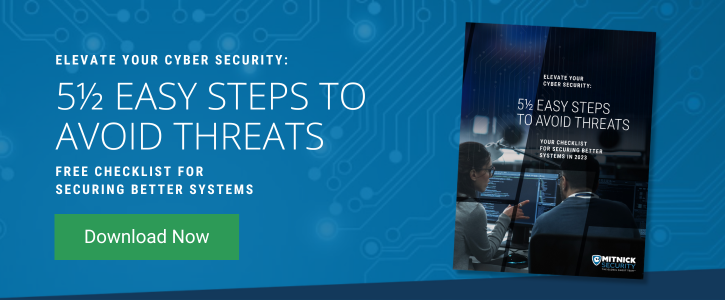Organizations around the world are enrolled in security awareness training programs and taught to look out for cybercriminals who are using a hacking technique called social engineering.
But while employees are taught how to spot a phishing email or to be careful connecting to public WiFi, we don’t always teach them why social engineering is such a dangerous breach tactic or how it affects organizations at large.
In order to motivate your employees to care about better protecting your organization, it helps for them to understand the true impact of social engineering attacks. It’s also key for leadership and management to deeply understand the importance of investing in robust social engineering training.
Here are a few ways social engineering affects organizations everywhere:
1. Operational Disruption
We’ve all seen the recent headlines … From the United Health Services ransomware attack that shut down the medical provider’s networks across their United States enterprise to the JBS breach that ceased operations at 13 of its meat processing plants in the U.S., cybercriminals like to halt business to get a payout or cause havoc.
Could your organization afford to completely halt operations — or even partly halt operations — for days on end? Social engineers manipulate employees’ trust to break into private systems and infect them with disruptive ransomware, demanding a fee in order to gain back access to a locked system. Other times, they’re “hactivists,” trying to stop the operation of a company they deem unethical or power-hungry. No matter the reason, social engineers are undeniably capable of holding up or completely shutting down operations to get what they want.
2. Data Loss or Exposure
Sometimes a cybercriminal doesn’t necessarily want you to know they’ve breached your system. They may spend weeks or months flying under the radar, moving laterally to unlock deeper sensitive information.
Sometimes, social engineers will use their tricks to steal the data and sell it on the dark web for a large return. Other times, they’ll do it to embarrass or expose a company. For example, the bad actors behind this year’s Twitch attack leaked the salaries of streamers they thought were overpaid to “out” the company online.
No matter the reason, social engineers can steal proprietary data, client information, financial reports, or any other sensitive information for personal gain. In the Kaseya attack, the bad actors breached one provider and obtained information concerning 60 of their clients — allowing the hackers to execute amplification attacks and steal even more data!
3. Loss of Trust
When a company is breached by a social engineer, there are always people who begin to doubt the trustworthiness of the organization. Their customers trusted them to protect their information, and the breached company let those customers down. During an attack, customer names, emails, addresses, credit card numbers, behavioral metrics, health info, and any private information can be stolen.
The effects a cyber attack has on a company’s reputation can last for years, haunting the brand’s perception of trustworthiness. For example, the 2020 Twitter Bitcoin scam proved that even leading social media giants — which guard so much information about us personally and professionally — can be hacked. Celebrity figures, government officials, and other influential users had their Twitter profiles compromised by threat actors who pretended to post as them. These Tweets broke the trust of many followers who made financial transactions upon the social engineers’ request.
4. Financial Implications
Social engineers can trick employees into wiring them money by pretending to be a trusted coworker, manager, or partner. They can break into bank accounts or authorized user accounts and clear you out of funds. They can also demand a financial payout in a ransomware exploit or share sensitive data with others on the dark web that enable future financial attacks.
Beyond the obvious ways social engineers steal money are the lesser known costs. For example, the downtime your organization experiences due to an attack affects profitability. Then there are the court and legal costs of trying to recover from being sued for privacy violations. Never mind the harder-to-measure cost of the attack on your reputation or long-term trust with your current and future customers. A cyber attack is never just a once-and-done sum cost.
Avoiding Social Engineering Attacks
While there’s no way of stopping social engineers from trying to trick you, there are things you can do to help prevent them from succeeding.
- Know what to look out for. Knowledge is power. Become aware of the common types of social engineering attacks to stay alert for the techniques being used today.
- Enroll your team in cybersecurity awareness training. Your team needs clear instruction from security professionals on how to best spot and avoid cyber attackers. Annual security training can help keep your team sharp.
- Create and enforce clear security processes. Social engineers often find backdoors when employees and management aren’t practicing the best security measures. Be clear about what you require of your team and how they can respond effectively, should they fall victim to an attack.
- Frequently test your company’s security readiness. Quarterly security assessments and annual penetration tests can help spot holes in your current security infrastructure.
- Stay up-to-date with the top techniques used. Social engineers are always looking for new, evolved ways to trick you. For example, COVID-19 phishing schemes took flight at the beginning of the pandemic. Who knows what’s to come. You and your team can stay informed by subscribing to security information blogs and frequently requiring updated training.
Are You Doing Your Best To Outsmart Social Engineers?
Social engineering involves many different types of tactics, which are ever-evolving. Ensure your organization is prepared by downloading 5-1/2 Easy Steps to Avoid Cyber Threats, which discusses five manageable improvements that can do wonders in increasing your security instantly. Get your copy today. 



-Copy1.jpg?width=350&name=Mitnick-Security-093-Enhanced-NR-Edit-Edit-Edit-Edit_(2)-Copy1.jpg)